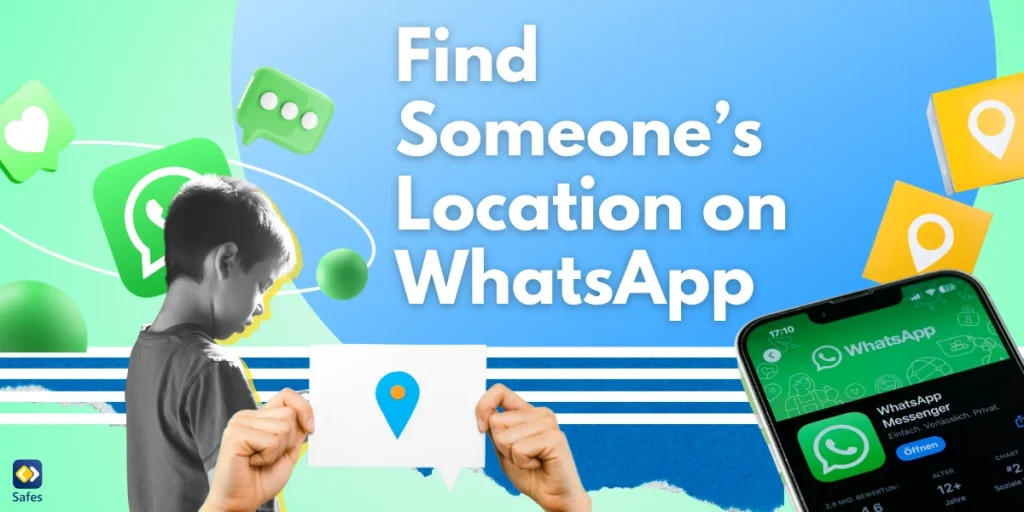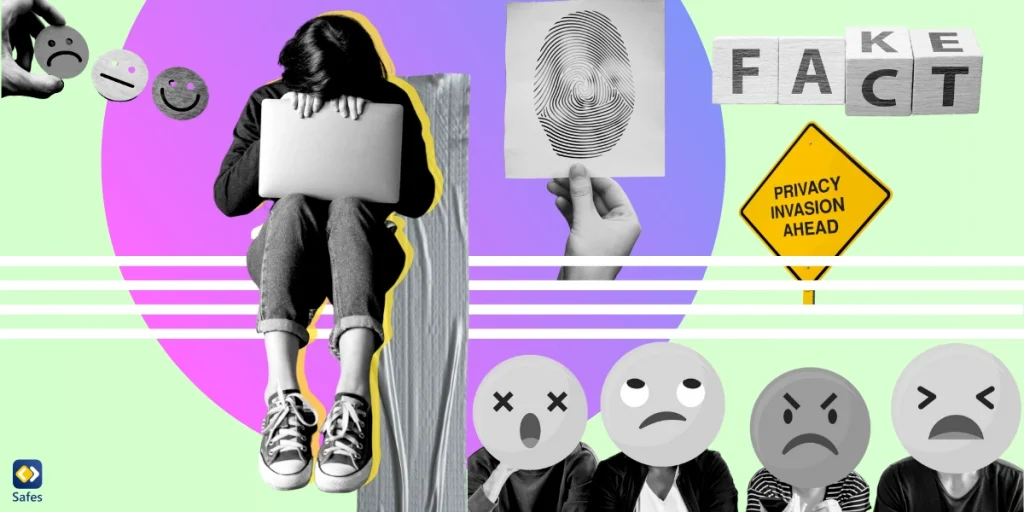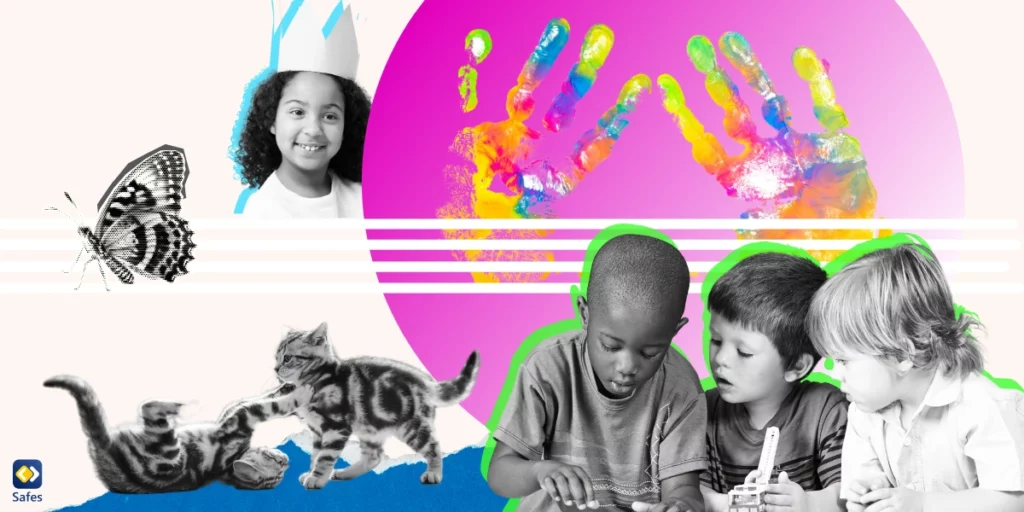Social media has become a significant part of our children’s lives. It’s where they connect with friends, share moments, and explore the world. But along with its benefits, there are various social media challenges, especially regarding our children’s mental well-being. Many parents worry about the impact of social media on their children’s mental health. If you have young children as well and are concerned about their social media usage, you need to get familiar with Social Media Anxiety Disorder.
Download and Start Your Free Trial of the Safes Parental Control App
While not every child who uses social media will experience these symptoms, parents need to be aware of the potential risks. To shield our children from the adverse impacts of social media, parents should proactively monitor their online activities. Firstly, setting limits on screen time can prevent excessive exposure to social media platforms, encouraging children to participate in offline activities. Moreover, you can try educating children about online safety, designating tech-free zones within the home, and monitoring children’s online activity through parental control apps. Using these strategies, parents can ensure a safer and healthier online experience for their children.
In this blog, we’ll explore the signs of social media anxiety disorder, its causes, and most importantly, practical strategies parents can use. So, let’s have a look at what exactly social media anxiety is.
What Is Social Media Anxiety Disorder?
Social media anxiety disorder is a term used to describe the negative effects of social media on mental health, particularly among children and teenagers. An article, Use of multiple social media platforms and symptoms of depression and anxiety, by a group of professionals including Brian A. Primack was published in 2021 that analyzed the relationship between mental health and social media statistics. Based on this study, using different social media apps can make people feel more anxious, even if they don’t spend a lot of time on social media overall. Symptoms of social media anxiety disorder can vary. However, some of them are very common and explained below:
- Having feelings of inadequacy or low self-esteem because of constantly comparing oneself to others based on what kids see on social media.
- Fear of missing out or FOMO, another symptom caused by seeing distorted reality and unrealistic images of others’ lives.
- Being obsessed with getting likes, comments, or followers on their posts.
- Having body image issues and eating disorders due to exposure to unrealistic beauty standards.
- Disrupted sleep patterns, insomnia, or poor sleep quality.
- Difficulty in staying concentrated because of constant notifications and the need to check social media feeds.

How Does Social Media Cause Anxiety and Depression?
With all the symptoms of social media anxiety disorder explained so far, it’s clear that social media causes anxiety in children. But it pays off to learn how it affects minds and leads to stress and depression. So, you can teach your children to use social media properly.
Comparing Themselves
Kids are exposed to various content that others share on social media platforms. When they see pictures of perfect-looking lives, they might think their own life isn’t as good. This can leave them feeling upset and jealous. As a result, they won’t feel happy with what they have in life.
Bullying
Like how kids can get picked on at school, they can also get hurtful messages online through social media. This cyberbullying can hurt their feelings, take away their self-confidence, and make them feel scared to appear in society.
Always Checking
Imagine if you always had to check your phone to see if something exciting or important was happening. That’s how some kids feel about social media. They worry they might miss out on something fun, so they keep checking their accounts regularly. This can make them feel tired and stressed. So that’s why we say social media increases anxiety in the youth.
Not Sleeping Well
Using phones or tablets before bed can make it hard for kids to fall asleep. The light from the screen can trick their brain into thinking it’s still daytime, making it hard to relax and sleep. Furthermore, not getting enough sleep can make kids feel grumpy, sad, or worried the next day.

How to Keep Our Kids Safe from Social Media Anxiety Disorder?
To protect our children from the negative effects of social media, parents need to take an active role in monitoring their online activity. Here are some helpful ways you can protect your child from getting affected by social media.
Set Limits on Screen Time
Establishing boundaries around screen time can help prevent children from spending excessive hours on social media. Encourage them to engage in offline activities such as sports, hobbies, or spending time with family and friends. Keep reading to find out the best way you can set limitations for screen time!
Educate About Online Safety
Teach your children about the importance of privacy settings, the risks of sharing personal information online, and how to recognize and report cyberbullying. Our children are members of the digital generation. Therefore, they need to be educated about online safety to be physically and mentally safe.
Create Tech-Free Zones
Designate certain areas of your home, such as the dinner table or bedrooms, as tech-free zones. So, they’re not allowed to use their digital devices in these rooms. This way you can promote face-to-face communication and family bonding without distractions from screens.
Monitor Their Online Activity
Stay involved in your children’s online lives by monitoring their social media accounts, friend lists, and messages. Use parental control apps to restrict access to inappropriate content and set time limits on device usage. This type of app allows you to track your children’s activities and control what content they see online.
Final Word
As a responsible parent, it’s crucial to know the effects of social media on mental health. Kids are the most vulnerable group in the cyber world and need help to stay safe. You should stay vigilant and involved in your children’s online lives while also fostering a healthy balance between screen time and offline activities. If you ever notice signs of social media anxiety disorder or other mental health concerns in your child, don’t hesitate to seek professional help.
To protect our children in the digital age, technological tools can also serve as valuable allies. So, you may have used Macbook or Windows parental controls before. However, you need something to track your child’s activities on cell phones. Therefore, we recommend using our parental control app, Safes. With Safes, you can monitor your child’s online activity, set limits on screen time, and ensure they’re using social media safely. You can also uninstall apps and block some content. So you’ll have the ultimate control over your child’s online safety.
Download Safes today for both Android and iOS devices and take advantage of our free trial to see how the app is beneficial for you.
Your Child’s Online Safety Starts Here
Every parent today needs a solution to manage screen time and keep their child safe online.
Without the right tools, digital risks and excessive screen time can impact children's well-being. Safes helps parents set healthy boundaries, monitor activity, and protect kids from online dangers—all with an easy-to-use app.
Take control of your child’s digital world. Learn more about Safes or download the app to start your free trial today!




